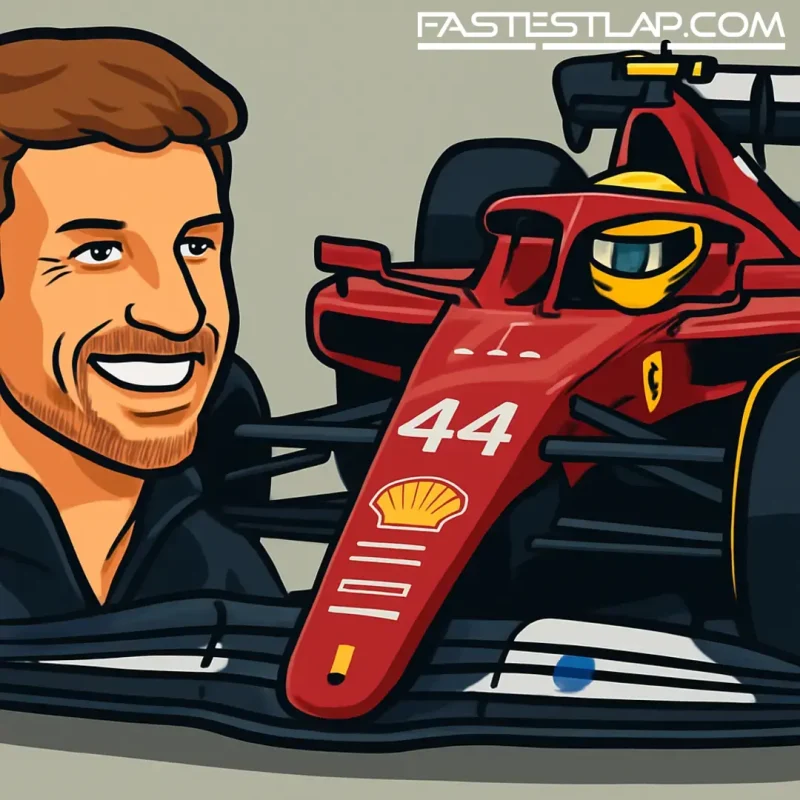Button baffled as Hamilton dodges heavier sanction after late brake drama in Singapore
Ferrari rolled the dice, Lewis Hamilton went hunting, and then his brake pedal went long. What followed was an untidy, slightly surreal end to Hamilton’s Singapore Grand Prix — and a penalty that’s stirred up the paddock.
Hamilton was one of only three drivers to two-stop at Marina Bay, bolting on softs with 16 laps to go. With the tyre offset in his pocket, Ferrari told Charles Leclerc to make way so Hamilton could have a proper crack at Kimi Antonelli’s Mercedes for fifth. The rookie held the position; Hamilton’s charge didn’t last.
“I saw my brakes were getting hot,” Hamilton said after, “I went into Turn 14 and sparks came off, my pedal went long. So grateful I still made the corner.” From there, the Ferrari began skipping over white lines like a stone across water. He missed multiple braking zones — 10 by some counts — and picked up a black-and-white flag before the stewards handed him the standard five-second penalty for repeated track limits violations.
Hamilton argued on the radio that the situation amounted to force majeure. The stewards weren’t buying it. In their words, he was “trying to manage a brakes issue situation,” which isn’t a justifiable reason to exceed track limits, so the “usual” sanction applied. He slipped from seventh to eighth at the flag.
The number, not the logic, is what rankled Jenson Button. The 2009 World Champion couldn’t square “five seconds” with the sheer volume of offs. “Honestly, I’m amazed,” he said on air. “Five seconds doesn’t sound like a lot for the amount of corners he didn’t go around.” He’s got a point: in an era where one wheel over a white line can ruin a lap, double digits in missed apexes feels like a different category of infringement.
Jamie Chadwick was less hawkish. Her take: the penalty was fair in the end because Hamilton had already bled plenty of time nursing the problem while cutting what he could. A “double whammy,” as she put it — no brakes, then a penalty — but one that netted out.
Fernando Alonso, parked right behind the faltering Ferrari for a spell, had no appetite for nuance. The Aston Martin driver let fly on team radio, incredulous that a car nursing a brake issue was allowed to continue. “Is it safe to drive with no brakes?” he snapped, arguing penalties for unsafe cars should be harsher. You can debate the language, but the safety question isn’t trivial: if a pedal goes long again in Singapore’s concrete canyons, there’s not much run-off to bail you out.
To rewind: this was Hamilton’s first Singapore in Ferrari red, and the race looked set to showcase precisely why he made the move. The team had the nerve to try something different, Leclerc played the team game, and Hamilton was carving into Antonelli’s mirrors. The 18-year-old Mercedes driver — a headline in himself this season — looked vulnerable on older tyres. Then the lights on Hamilton’s dash started screaming about brake temperatures and the whole plan unraveled.
In the cold light, the stewards did what they always do with repeated track limit breaches: add five seconds. That’s consistent, even if it doesn’t capture the spectacle of a seven-time World Champion wrestling a car with fading brakes around Singapore and testing the patience of every marshal at every apex. Button’s frustration is really aimed at the framework — there’s no scale for volume or context, just a fixed-price menu — but consistency is the currency race control clings to after a few too many grey-area storms.
The bigger takeaway for Ferrari will be technical, not judicial. The strategy call was fine; the execution was undone by a hardware limit. The team will want to know whether the temperature spike was a predictable consequence of the late push in traffic, or a cooling margin misread. Because the pace was there. Without the brake fade, Hamilton versus Antonelli for P5 would’ve been one of the fights of the night.
Instead, it’s a footnote with bite. Hamilton’s move to Ferrari in 2025 was always going to put him nose-to-nose with Mercedes in strange, high-pressure moments. This one ended with a shrug from the stewards, a sigh from Ferrari, delight in the Mercedes garage — and a chorus of pundits wondering if five seconds is ever enough when a driver blows the white lines that often, for whatever reason.
For now, the book stays closed: standard offence, standard penalty. But if Formula 1 wants to align sporting justice with what fans can plainly see on track, there’s an argument to be made for a sliding scale when “a few times” becomes “far too many,” even when the cause is mechanical rather than clumsy.
Ferrari and Hamilton head to the next round knowing the car’s quick, the margins are razor-thin, and Singapore doesn’t forgive. Antonelli keeps the bragging rights this time, and Alonso keeps the last word. That all feels very 2025.




